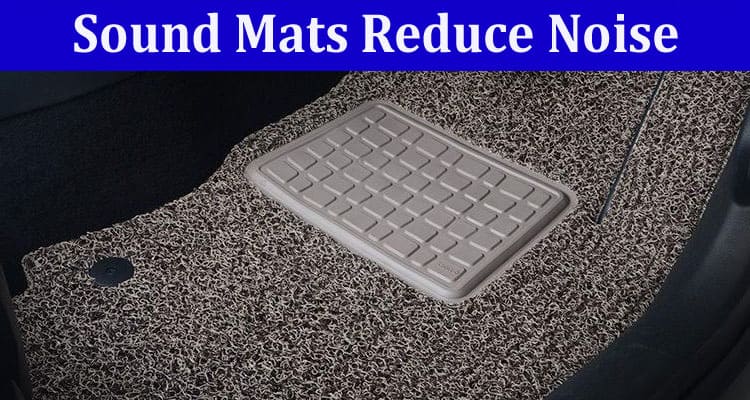Sound mats are floor underlayments that control the spread of structural and airborne noise. High-performing mats can dampen impact sounds and minimize heat transfer between floors, improving your space’s comfort and serenity. They work through sound absorption and sound insulation. Sound mats reduce noise by:
1. Minimizing Impact Sounds
Regulating floor impact sounds is more challenging than airborne sounds. Floor impact sounds may have more variables, requiring a unique solution. A sound mat reduces the reverberation of sound from the floor. Their soundproofing materials, like fiberglass, absorb sound energy from objects and individuals hitting the floor. They form an air-tight barrier around the floors and walls to reduce sound transmission.
2. Dampening Vibrations
These mats use insulating materials like foam or mineral wool to dampen sound energy and convert it into heat energy. Their composition traps and disperses sound energy as it transfers between the floors. Heat energy doesn’t vibrate or reflect like sound waves. It reduces sound vibrations from your flooring to the subfloor. Sound mats can also utilize sound isolation to prevent sound waves from passing through flooring materials. They utilize heavy constituents like vinyl or rubber to stall sound from moving through building materials.
3. Blocking Airborne Noise
Airborne sound is a sound wave measured in decibels. Soundproofing underlayment enhances your floor’s mass and density to prevent sounds from electronics and conversations from troubling others. The mats’ rubber and vinyl materials absorb or reflect airborne noise, stopping them from moving to the other rooms.
4. Thermal Insulation
Soundproofing materials like mineral wool, rubber, or foam have low thermal conductivity. They can minimize heat conduction between room spaces, regulating your room’s temperature. You can also cover your subfloor gaps with sound mats to improve your AC and heat regulation. Better thermal insulation can reduce your power bills, and high-performing mats can offer heat insulation.
Picking the Right Sound Mats
Here are tips for choosing the right mat:
Check Flooring Material
Soundproofing differs based on the type of flooring. Wood flooring should be clean, flat, and dry. Rubber or foam mats are suitable for hardwood surfaces; they are dry and provide a firm base. Tile or vinyl flooring is wet-set installed, so mats made of wood composite are unsuitable for such floors. Pick a product resistant to dentation from static and dynamic energy from vinyl flooring.
Understand Soundproofing Ratings
Your sound mat should remove structure-borne and airborne noise. IIC (Impact Insulation Class) and STC (Sound Transmission Class) define a product’s soundproofing performance. IIC indicates how your floor blocks structure-borne noise. Delta shows your product’s IIC. STC evaluates your floor’s performance to block or dampen airborne noise. Pick a mat with higher IIC and STC values for better performance. Check your local building codes and contractor to install the product easily.
Mold and Mildew Resistant
The presence of mild and mildew can impact a mat’s performance. Select a mat resistant to moisture, mold, or mildew growth. Rubber underlays can perform well in wet rooms like kitchens or bathrooms. Check the properties of different products and how they resist moisture and mildew.
Check Regulations
Some municipalities set guidelines for soundproofing materials. Familiarize yourself with the regulations before installing your sound control mats. Assess fire resistance parameters on soundproofing materials and check firebreak guidelines for specific areas like pipe runs. Confirm acceptable sound-absorbent materials in your facility type.
Purchase Sound Mats Today
A sound mat absorbs or isolates sound, preventing it from transferring to other rooms through ceilings/floors. Buying a suitable soundproofing underlay can improve your floor’s sound control. Work with contractors, experts, and local authorities to properly install soundproofing mat products.


